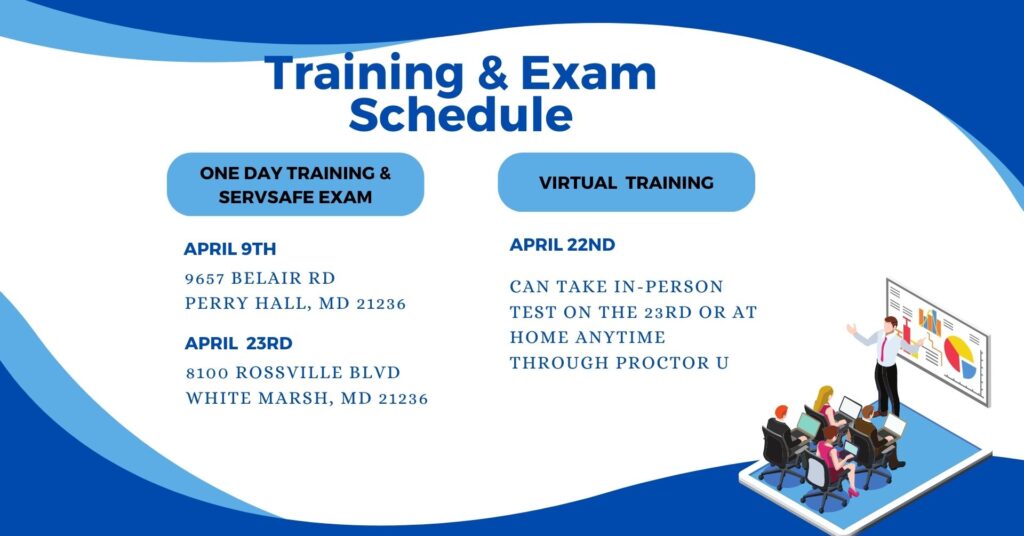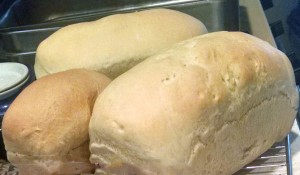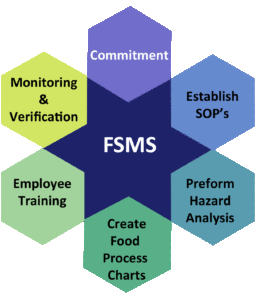| I hope this message finds you well. I am writing to emphasize the critical importance of employee health and hygiene in maintaining the highest standards of food safety within your establishment. During my Food Safety trainings I often ask, “How many people have had an official employee illness training outside of taking this training? “. The answer is astonishingly low. Ensuring the well-being of your employees directly correlates with the safety and quality of the food you serve. The FDA has a comprehensive Handbook to address best practices. The handbook is now accessible on our website MarylandFoodHandler.com . It covers essential topics such as proper handwashing techniques, illness reporting procedures, and personal hygiene standards that are crucial for preventing foodborne illnesses and maintaining compliance with regulatory requirements. We encourage you to share this resource with your team managers and integrate its recommendations into your daily operations. By prioritizing employee health and hygiene, we collectively contribute to a safer and healthier environment for both your staff and your customers. Should you have any questions or require further assistance, training, or any other food safety concerns, please do not hesitate to contact me. I am here to support you in upholding the highest standards of food safety. Thank you for your attention to this matter. Together, we can continue to raise the bar for food safety excellence. Sue Farace, CP-FS |
Tag Archives: food safety
ServSafe Food Protection Manager Certification
We are happy to announce that Brightview Sr Living in Perry Hall will be hosting a training once a month for the remainder of the year. If you would like to host a training at your facility you can enroll one student for FREE!
Our next open enrollment training and exam will be held June 17th at 9 AM. You can register here
April 2024 Food Protection Training Schedule

April 22, 2024 Virtual training through Zoom. You will need to take the exam in person or through ProctorU. When you register for both the training and an in-person exam the cost is $145 per student
April 23, 2024 In person training and computer ServSafe Exam.
Check our schedule for May and June trainings: https://www.marylandfoodhandler.com/food-safety-training-schedule.php
Food Protection Manager Training
I receive quite a few inquiries asking about the difference between the Food Protection Manager Certification training and food handler training. The clearest difference is if you are located in one of the following Maryland Counties; Baltimore (County or City), Prince Georges, Montgomery, or Howard you must have one person that is certified by passing an approved exam such as ServSafe® on duty at all times when food is being handled.
During the class that prepares you for the exam you will learn;
- How to serve safe food
- Learn about bacteria, viruses, parasites, fungi and biological toxins.
- What can cause food to become contaminated or adulterated
- How to protect food from contamination
- Discussion on food allergies
- Personal hygiene
- Temperature control from delivery to sale
- Facility and pest management
- Employee training
- Introduction to Food Safety Management Plans
Our Top-Notch training is for all staff that work with or around food and will provide staff knowledge they need to provide safe food and includes the following topics:
- Why practicing food safety is important
- How to handle food during the flow of food
- What can go wrong, and the cost to the employees and owners
- How food handlers can prevent contamination of the food they serve
- Allergens
- Employee Illness
For more information on which training would be best for your staff, call our office at 410-687-1015 and we will be happy to help.
You can also find our current training schedule at https://www.marylandfoodhandler.com/food-safety-training-schedule.php
Do you have a positive food safety culture?
When I was a teenager, I worked at a large franchise fast food place. I remember one night while closing the assistant manager told me to take the leftover toppings from the salad bar and pour them back into the original container. Even my 16-year-old self knew that was wrong and it sent a message to me that the rules don’t matter.
When top management puts profits over food safety and quality control, they are putting the customer last. The staff see this and take the attitude of “If they don’t care, why should I”. Without a positive food safety culture, employees can get frustrated at the lack of leadership, customer service suffers, quality control does not exist and customers stop coming in the front door.
A positive food safety culture starts at the top and flows on down to the staff that grind out every day getting it done. When the owners, general managers and top staff create an environment focused on food safety and quality control the staff can work more efficiently. When there is a plan with expectations the staff understand what is expected of them and the staff work more like a team. Happy Team – Happy Customer.
Let’s talk about what we can do to develop a Positive Food Safety Culture in your facility.
You do not need to recreate the wheel. If you are a Maryland facility, you already have a written HACCP plan and that should be an excellent framework to build upon. However, if it is sitting on the shelf gathering dust it is not serving any purpose. Go get that HACCP plan, dust it off and let’s get to work.
First things first, let’s assess the current systems in place. I have created a list of questions you should ask yourself.
- Do you make Food Safety a priority in your restaurant?
- If you thought, well yes, of course we do. What do you specifically do to communicate that to your staff?
- Does the existing HACCP plan represent your current menu?
- Are the SOP’s a reflection of the current processes and procedures currently in use?
- Do the SOP’s include the written policy, monitoring, corrective actions and verification steps?
- Are the food process charts or recipe cards written in a clear understandable way so that employees can follow them? Are they being used, especially by new staff?
- What is the current status of the restaurant?
- Take inventory of where deficiencies are noted by past local health inspection and perform an in-depth inspection of the facility. Depending on the size of your facility, 0ur 3rd party inspection checks for over 300 line items and rates them. Providing you with a snapshot of how your facility is doing.
- Check all the online rating services like Google & Yelp. Do you see similar complaints over and over?
- What are the current employee training methods?
- Are they verbal, written, a computer or video-based learning system?
- Do they seem to be effective?
- Are some of your complaints or health department deficiencies directly related to an employee not following company standards or violating food safety laws?
- How is your current communication between management and staff?
- Does staff feel comfortable informing you of potential problems?
- Do staff work as a team or is it every person for themselves?
- Do managers often say they feel like they are playing wack-a-mole?
- Do you have regular staff meetings with and without managers?
After answering these questions do you still feel like you have a positive food safety culture that focuses on providing the best experience for your customer? Not to worry, we can help you work though the challenges that your facility faces. SMF Training & Consulting can work with you to establish a working Food Safety Management System where the focus will be on providing safe food and excellent quality control. We will work within your budget to get you where you need to be for the best customer experience. Give us a call today for a free 1-hour consultation.
Selling homemade goods using cottage food laws
 Do you make a great cookie or tasty home-baked bread? Do your friends and family always ask you to decorate cakes for them?
Do you make a great cookie or tasty home-baked bread? Do your friends and family always ask you to decorate cakes for them?
Have you ever thought about starting your own business from home? You can have up to $25,000 in sales a year and not need a health permit. Effective October 1, 2019 there is even a pathway for you to sell to retail stores! There are a few things you need to know first before getting too excited.
You need to understand the Cottage food industry laws in Maryland. There are some limits on what you can make in your home kitchen. Some of the foods you can not sell include; Jerky made from meat products, chocolate covered strawberries, cut fruit displays, cupcakes with buttercream icing and fruit pies. You can sell items like; cookies, chocolate covered pretzels, breads and cakes without potentially hazardous toppings or fillings. Potentially Hazardous means they need refrigeration.
You must label your items properly. For instance you must have the list of ingredients and a statement saying “made by a cottage food business that is not subject to Maryland food safety regulations”. Your sales also must only be in the state of Maryland. That includes mailing orders outside the state.
You should also have a good knowledge of food safety. This can be achieved by taking a food protection manager training. The one day class is $145 and I bet your customers would be happy to know you have been properly trained in how to protect the food from contamination! You can even post your official ServSafe certificate on your page!
If you want to learn more about the specific restrictions you can find them by clicking the Cottage Law link. We are always happy to answer your questions so feel free to call the office at 410-687-1015.
Have a food safe day!
Sue
Bad advice on thawing your turkey
It’s that time of year when you are bombarded with posts and emails about food safety and Thanksgiving dinner. Most of it is excellent advice. However, today I saw a post from a popular site about thawing your turkey. The post mentioned several methods of thawing, including submersed in a pan, under running water that is 70°F or below. However, it neglected to mention that if at anytime the exterior of the turkey goes above 41°F for more than 4 hours you should discard.
Using running water to thaw even a small turkey is not going to happen in under 4 hours. This would leave the exterior of the bird in the temperature danger zone (41°F – 135°F) for a period long enough to support the growth of certain bacteria associated with turkey like, Campylobacter jejuni, Clostridium perfringens, Escherichia coli O157:H7(E. coli), Listeria monocytogenes, Salmonella, Shigella and Staphyloccocus aureus. Some of these bacteria can form spores or toxins that will not be destroyed by normal cooking temperatures. You and your guests will likely suffer the consequences.
The CDC mentions that one method of thawing could be in a leakproof bag in cold water in your sink and changing the water every 30 minutes. Okay, I understand what they are suggesting, use cold water, the frozen bird will most likely keep the water below 41°F. But at what point after the bird is almost thawed and the water temperature rises thereby causing the surface to rise above 41°F? Furthermore, it is likely that your turkey has bacteria, why risk the risk of cross contamination during the changing of the water every 30 minutes. This is the same reason we do not rinse our poultry. Remember, if you are in a restaurant, this is not an approved method of thawing.
So, although thawing under running water is great for smaller items like shrimp, it should never be used as a thawing method for larger items. Be safe, plan ahead, and do it under refrigeration. Plan on 24 hours of thawing time for every 5 pounds.
Have a wonderful Holiday and always be food safe!
Sue
Retail: Is your food safety management system healthy?

Food safety management system
When a facility has a functioning Food Safety Management System (FSMS), team members perform better, and customers will receive a consistent message when visiting.
In Maryland a HACCP plan is required for every moderate and high priority facility when they start up. Often, they become forgotten until a health inspector asks to review it. A HACCP plan should not be looked at as “just another requirement”. A well written HACCP plan should be part of your overall food safety management system and should be part of your day to day operations. However, HACCP is only the beginning of your full Food Safety Management System.
What is a FSMS?
The short answer is; Team members understanding, consistently following and documenting the processes and procedures you have in place to minimize the risk of contamination of food.
Let’s take a more in-depth look at what your system would look like.
Commitment
The first step in creating your Food Safety Management System is to have a commitment to food safety. No matter what your brands message is your team needs to understand that without food safety you cannot provide a consistent message to your customers. This starts from the top down. When team members think the “bottom line” and sales is all you care about food safety will not be a priority. Unfortunately, the two go hand in hand.
SOP’s
Next establish your Standard Operating Procedures (SOP’s). This would include; your purchasing program that ensures your food is from a safe source, personal hygiene program, employee illness, cleaning and sanitizing program, how your facility avoids cross contamination, and establishing time and temperature controls to avoid bacterial growth. The person writing the SOP’s need to have a good understanding of food safety and the current practices and procedures of the facility. This is the core of preventing contamination to food.
Hazard Analysis
After your SOP’s are established you must look at every menu item and determine where a biological hazard could occur. These are called critical control points. In a Maryland retail food facility this would be steps in the process like cooking, cooling, reheating and hot holding. Again, the person doing the hazard analysis must have a good understanding of food safety risks. There are special considerations when the facility does certain practices like; using time as a public health control, cooks using sous vide, does any reduced oxygen packaging, uses additives or preservatives, cures food like bacon, displays seafood, squeezes juice or offers live shellfish in a display like a lobster tank.
Food Process Charts
Using data from the Hazard Analysis, create the food process charts. The Department of Health and Mental Hygiene offers four methods of creating charts. I prefer to use method #2. I feel that it is the easiest for food handlers to understand and follow along. For every CCP identified in the Hazard Analysis you must list the critical limit, how monitoring will take place, what corrective action you should take if there is a deviation in the critical limit and how will you verify the monitoring took place.
Training
Congratulations! You now have a HACCP plan. Now we need to make sure that team members are on the same page. That is where training come in. Training should be job specific and ongoing. Divide your facility into stations, for instance, prep, expo, servers, warewashing, etc. Review your SOP’s and make sure you include all necessary points in the training. Remember, everyone in your facility should be trained in personal hygiene and employee illness. Training can be computer based, group, one on one or a combination. I believe the best training starts with computer-based or group training and then one on one with a qualified team member providing the training. During training, be sure to correct the team member when doing something incorrectly. This can be done gently and politely but now is not the time to worry about hurt feelings.
Monitoring and Verification
Our system would not be complete without making sure that it is working. We do this through monitoring the critical limits established in the food charts and monitoring team members to ensure that all SOP’s are being followed as well. Monitoring is an action, for instance, it could be a visual observation or actually taking a temperature reading of cooked food. Verification occurs when monitoring is documented through charts and logs. The team member performing the task documents the result. Managers must review these logs and documents to ensure the system is working the way it should.
For instance, if a team member had to cook the chicken longer than the procedure states they would document this as a corrective action. Managers then review the corrective action documents and can then investigate why the corrective action had to be taken. Perhaps, they deep fryer is not working correctly, or the team member placed too much chicken at one time in the basket. Management can make corrections by either repairing equipment or retraining the team member.
Revise
When you make menu, equipment or structural changes the entire system needs to be reevaluated. Maryland requires your HACCP be revised every 5 years or when significant changes have taken place.
Time as a control for food safety.
|
